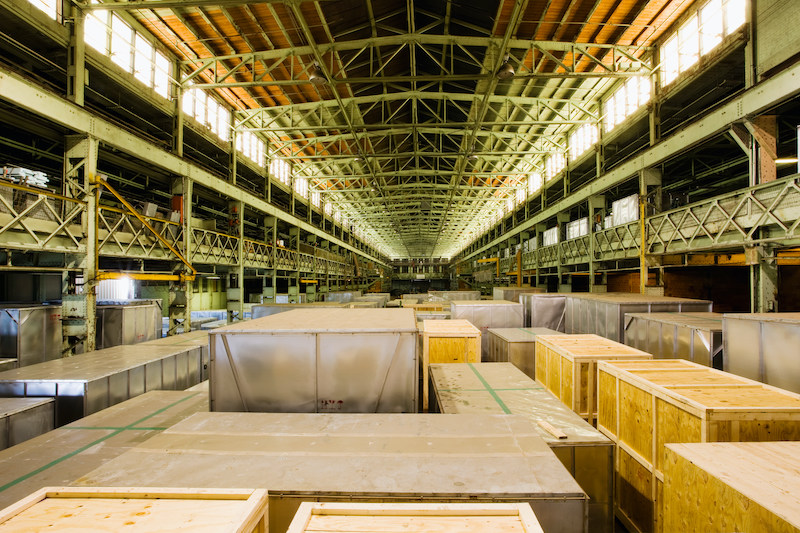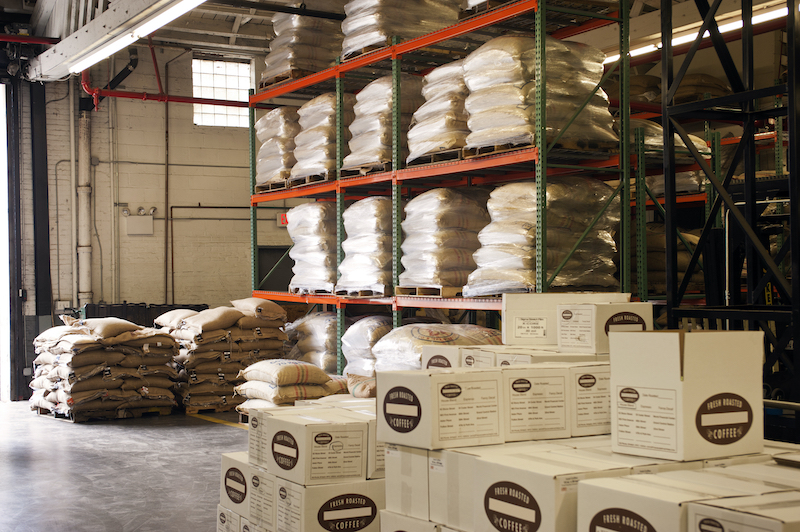Any industry with a significant amount of freight requires efficient transportation and storage measures. At a certain point in their production process, all businesses outgrow their initial space and need to start outsourcing their products for storage in warehouses. This article will discuss when to start looking to warehouse your freight, the supply chain and its effect on your freight, logistics warehouses, and how to decide between warehouse types.

Where to Start When Warehousing Your Freight
You should start searching for places to warehouse your freight when you realize that the freight forwarding process has become too much for your business alone. Depending on your chosen preference of warehouse types, the process for selecting a warehouse may look different for each industry.
What Is Freight Forwarding?
Freight refers to goods transported in bulk through various modes like aircraft, ships, trains, and trucks. Freight exists as just one part of a more extensive manufacturing process as you need to create the product, pack it, transport it, unload it into the warehouse, and then load it again for distribution. We call this process freight forwarding or the forwarding of freight (cargo) through the various production stages. There are six key steps to freight forwarding:
- Export of goods from the original source to the industry’s or shipping company’s warehouse
- Export of products leaving a particular region which requires clearance
- The origin handling, or the unloading and verification of the freight
- Importing cargo through customs
- Destination handling, where the cargo is transferred to chosen warehouse types
- Import haulage, or the final delivery of product from the warehouse to its destination
Throughout the entire freight forwarding process, warehousing remains a vital element.
Why Would I Warehouse My Freight?
You should warehouse your freight once you begin noticing any of the following:
- You cannot keep up with supply and demand. Your current warehouse or in-facility location is not near any major customer bases. In this case, you want to find a warehouse with easy assembly and distribution close to your customer base.
- Your facility quickly runs out of storage. A facility that cannot accrue sufficient product storage won’t keep up with consumer demand.
- You chose something other than a warehouse that can expand its storage space. For increased production, you must have a warehouse with flexible storage options.
If any of these concerns impact your production process, it’s time to look for freight warehousing.
Warehouses In Supply Chains Affect Your Business
Most industries begin searching for warehouses for their freight once they start experiencing supply chain issues. Due to recent events – such as a pandemic – issues with the global supply chain have rapidly developed.
Common Issues for Warehouse in Supply Chains
Global or even local events can severely impact your warehouse in supply chain production. Common issues your warehouse in supply chain production may face include freight pileups, late or denied access to destinations, labor inconsistencies, and increased costs.
These issues affect all warehouses, yet if you carefully select your warehouse types or types best suited to your industry needs, it’s possible to forego many of these issues. Logistics warehouses are the best facilities for limiting these issues.

How Logistics Warehouses Solutions Can Solve Your Storage Issues
When tackling storage and distribution issues, it is essential to know that logistics warehouse solutions exist for this exact purpose. Managing a warehouse on top of your own product assembly can easily become a complicated mess. However, with knowledge of suitable warehouse types and proper organization management, you can make the right decision when warehousing your freight.
What are Logistics Warehouses?
Logistics warehouses consist of warehouses that have been designed with warehouse logistics in mind. Warehouse logistics involves:
- The process of planning
- Operating
- Managing freight within a warehouse to meet business needs and consumer demand
Logistic strategies focus on managing physical inventory flow, including locating, packing, and shipping orders.
Logistics warehouses offer many advantages as they offer accurate inventory, maximized warehouse space, reduced returns, easy management systems, and productive allocation of employees and resources to produce high efficiency and low labor costs.
Qualities of Reliable Warehouses
Every warehouse type has its own distinct characteristics with different features. Some warehouses will suit your business needs more than others. However, despite the number of features offered, you should only warehouse your freight if it provides these essential qualities:
- A safe property with proper security and the latest technology
- Organized loading and storage operations
- Easily accessible to loading transportation
- Prompt customer service and delivery systems
- A well-planned interior
Best Warehouse Types
Choosing between different warehouse types includes identifying logistics warehouses and which characteristics of these warehouses actively use logistics. Since logistics warehouses are highly organized with efficient management processes, they usually comprise the best warehouse types.
Several recommended warehouse types with good management and timely supply chain solutions include the following:
- Raw Material and Component Warehouses – These warehouses store the initial, or raw, materials that industries use later in the manufacturing or assembly process.
- Work-In Process Warehouses – As its namesake implies, these warehouses hold work-in-progress materials. Essentially, they store the unfinished components from different points in the assembly process. For example, products such as vehicles require transportation separately to other countries before final assembly.
- Finished Good Warehouses – Finished goods facilities store finished products and are typically located close to the manufacturing point. These warehouses help to balance the demand for specific products and serve as a nearby site for easy inventory replenishment. For instance, fashion and makeup industries tend to use these warehouse types since their products are in high demand and expire quickly.
- Distribution Warehouses – These facilities act as major product distribution centers, often located near the central manufacturing site. They are designed as logistics warehouses that accumulate and distribute freight in a highly organized manner.
- Fulfillment Warehouses – The smaller of the warehouse types, they fulfill small orders that customers themselves need to pick up, transport, or ship.
Benefits of Warehousing Your Freight
When deciding when to warehouse your freight, consider how each of the warehouse types will most benefit your industry. First and foremost, consider the design of the facility itself. Were the facilities designed as logistics warehouses, with sufficient organization and planning in mind? Given it is a well-designed warehouse, does it offer any flexibility for your industry needs? For example, finished and distribution warehouses are similar in providing easily accessed product storage. Finally, determine if your chosen warehouse offers short or long-term storage – some industries may require both forms, while others only require enough storage for short-term solutions.

Heavy Weight Transport Warehouses Will Store Your Freight
Heavy Weight Transport will store your freight with ease. Despite any global or local supply chain issues, we offer reliable, consistent, and cost-effective transportation and warehousing solutions. With various warehouse types in many locations, such as LA, NY/NJ, and more, your freight will undergo the best logistics warehousing and transportation.







